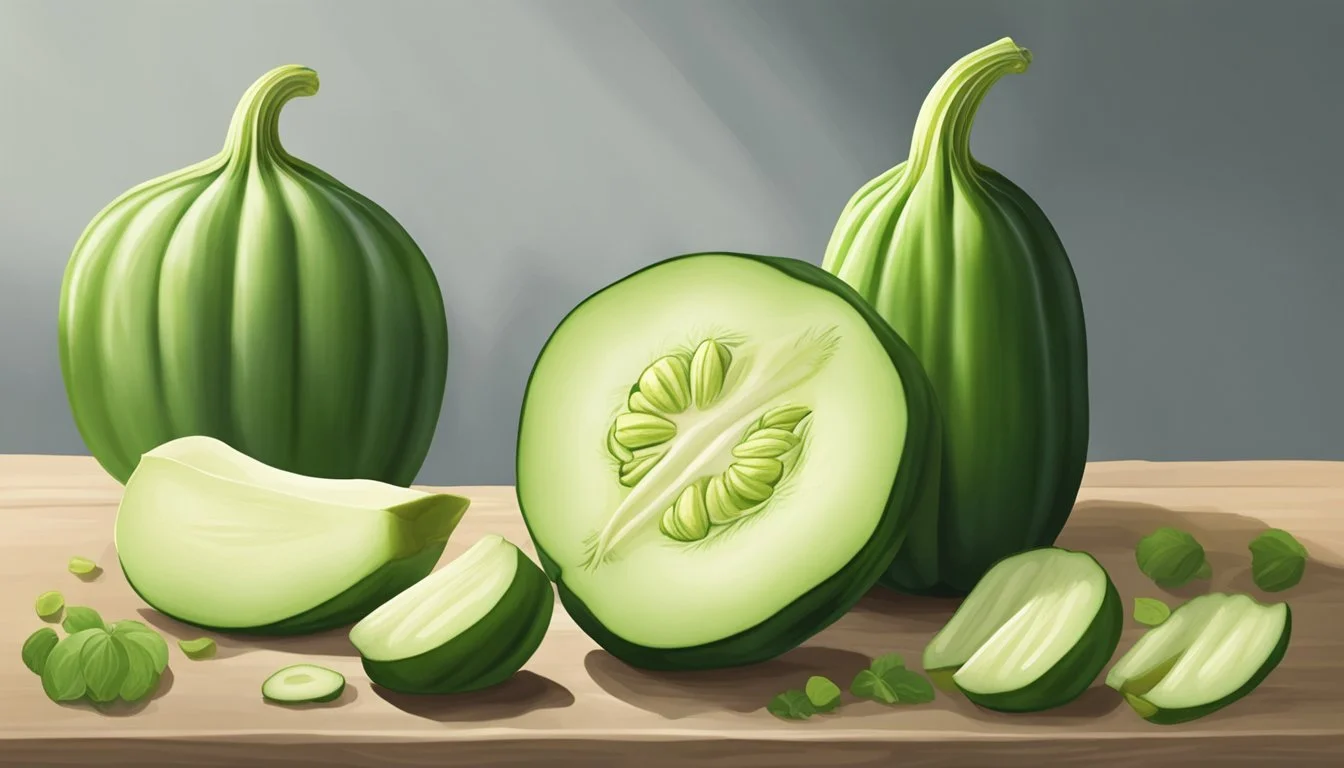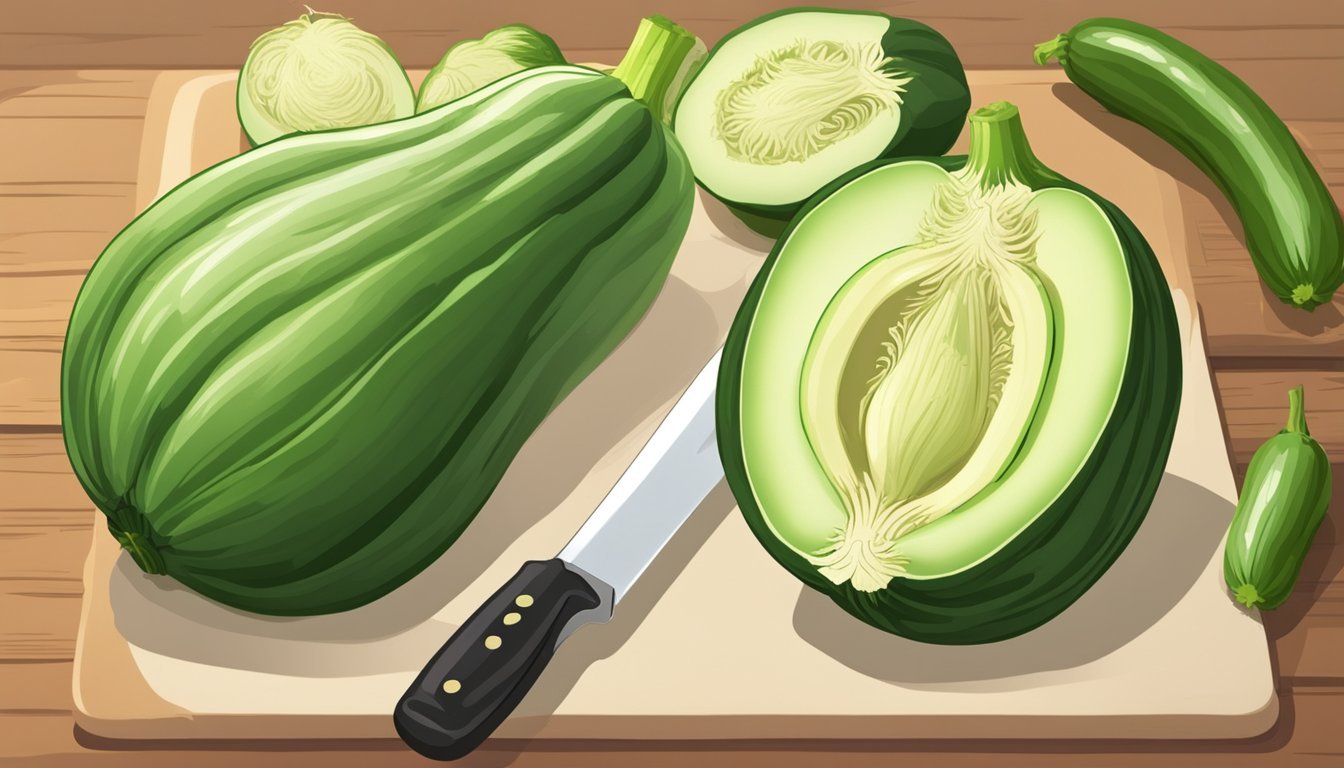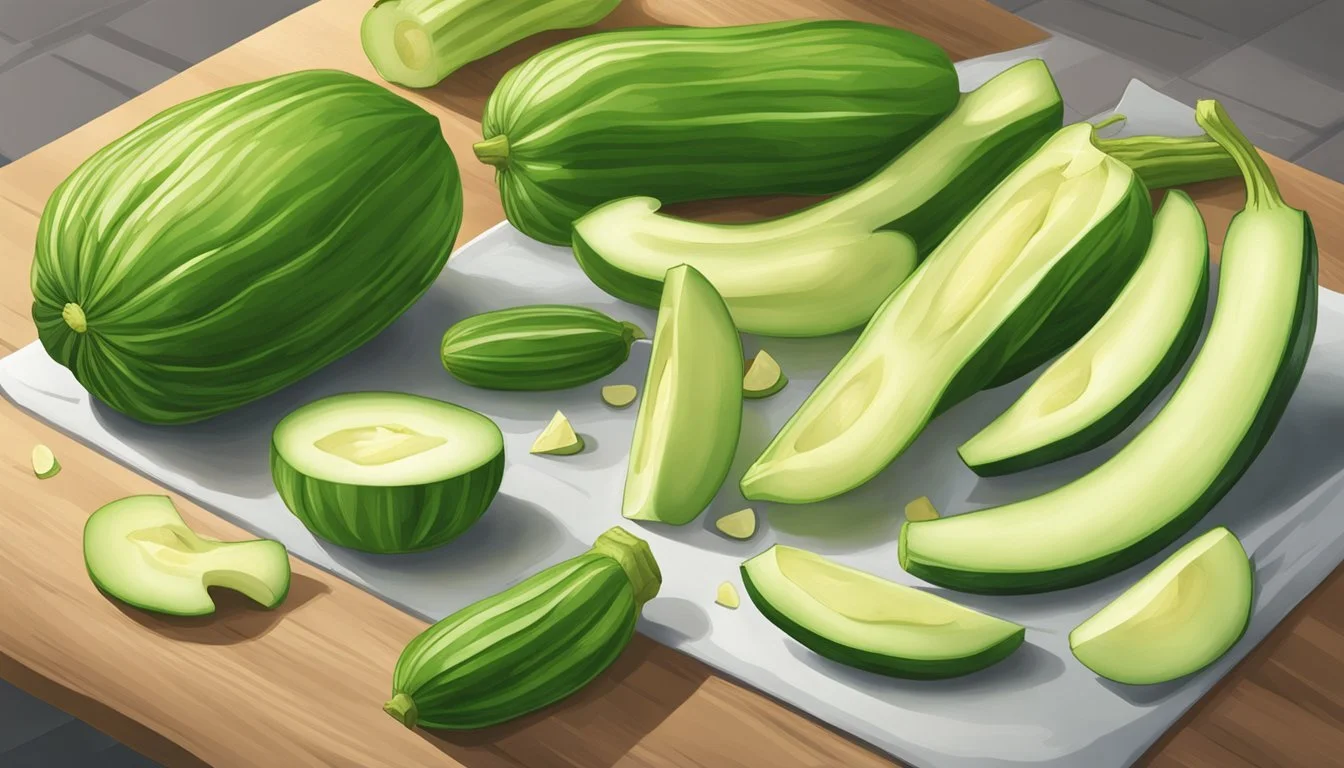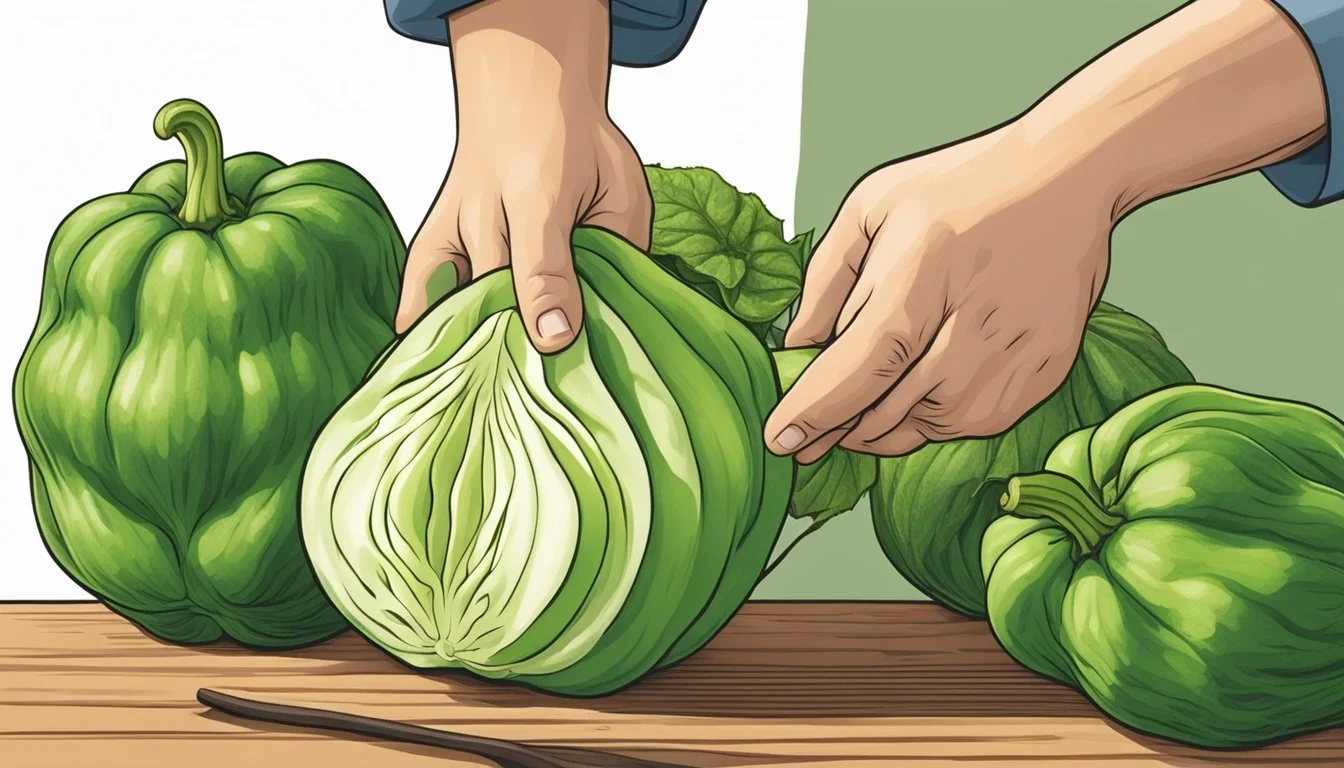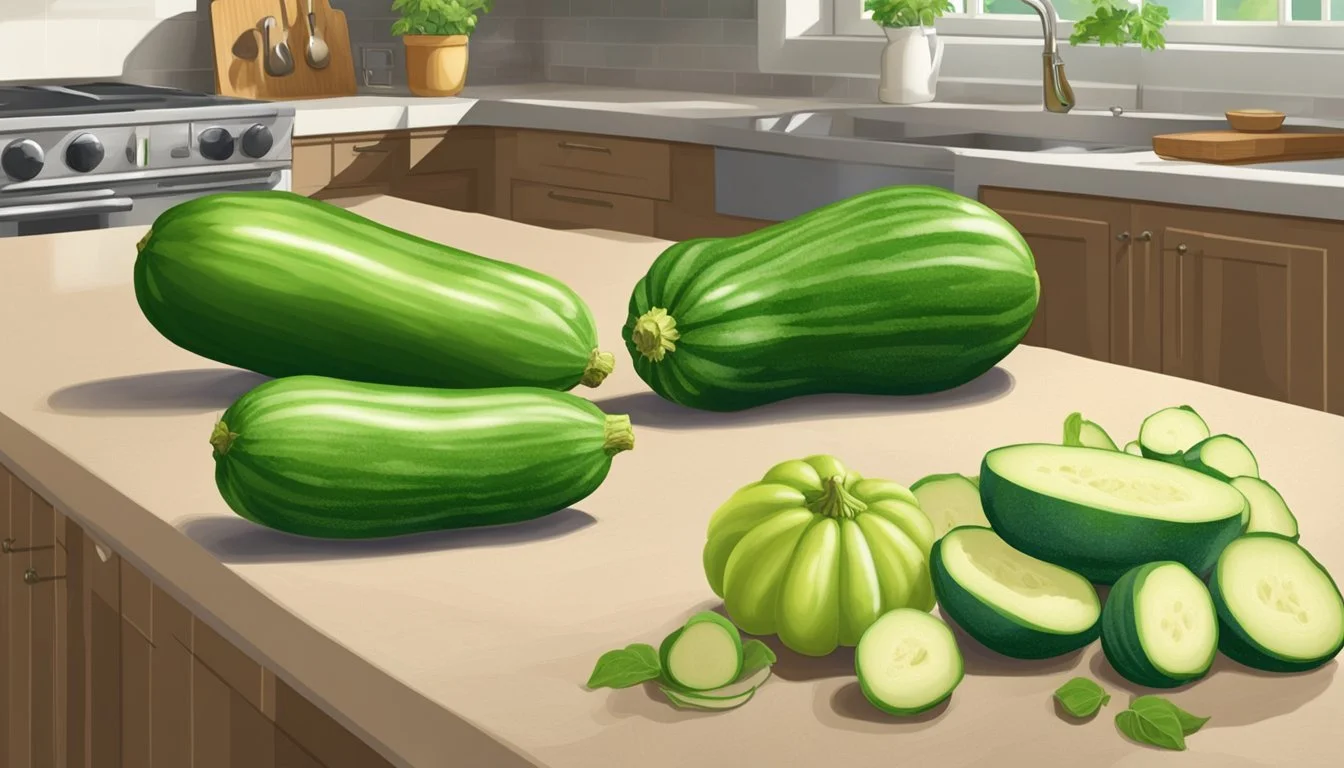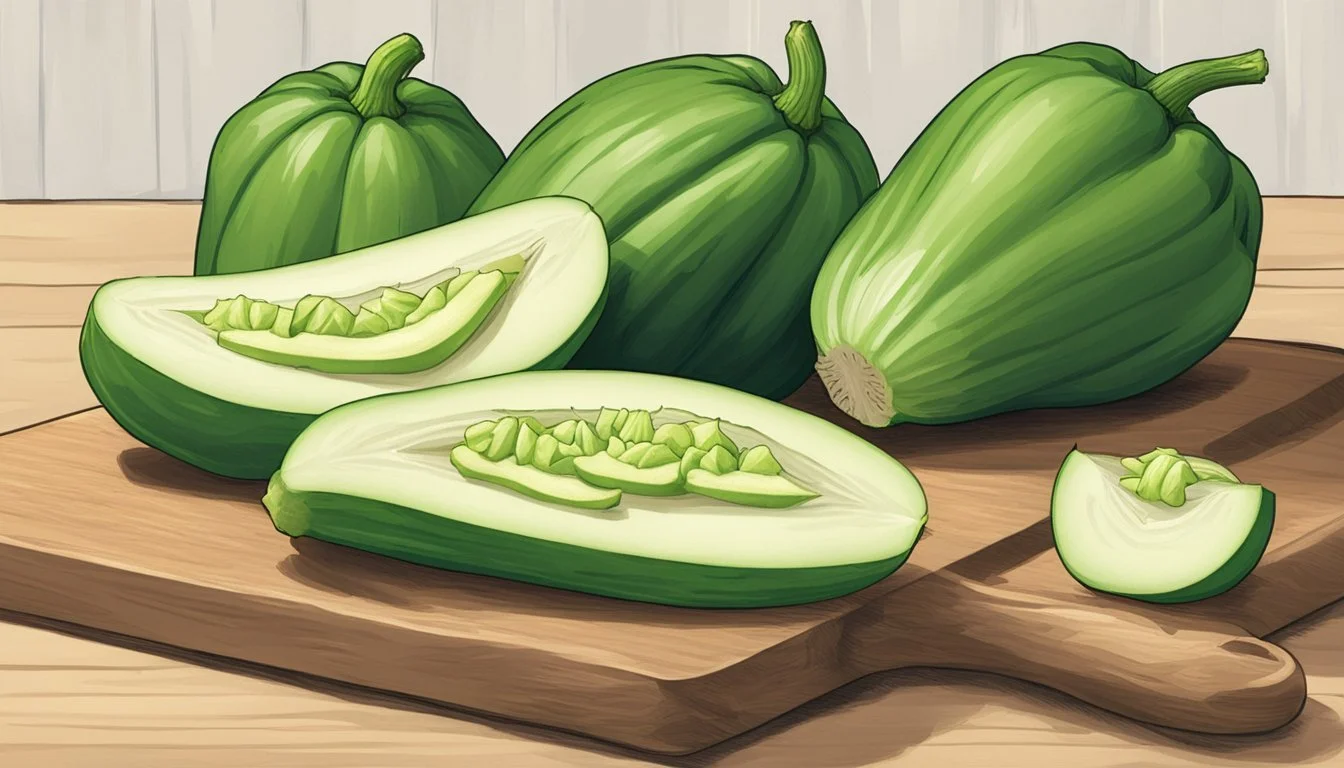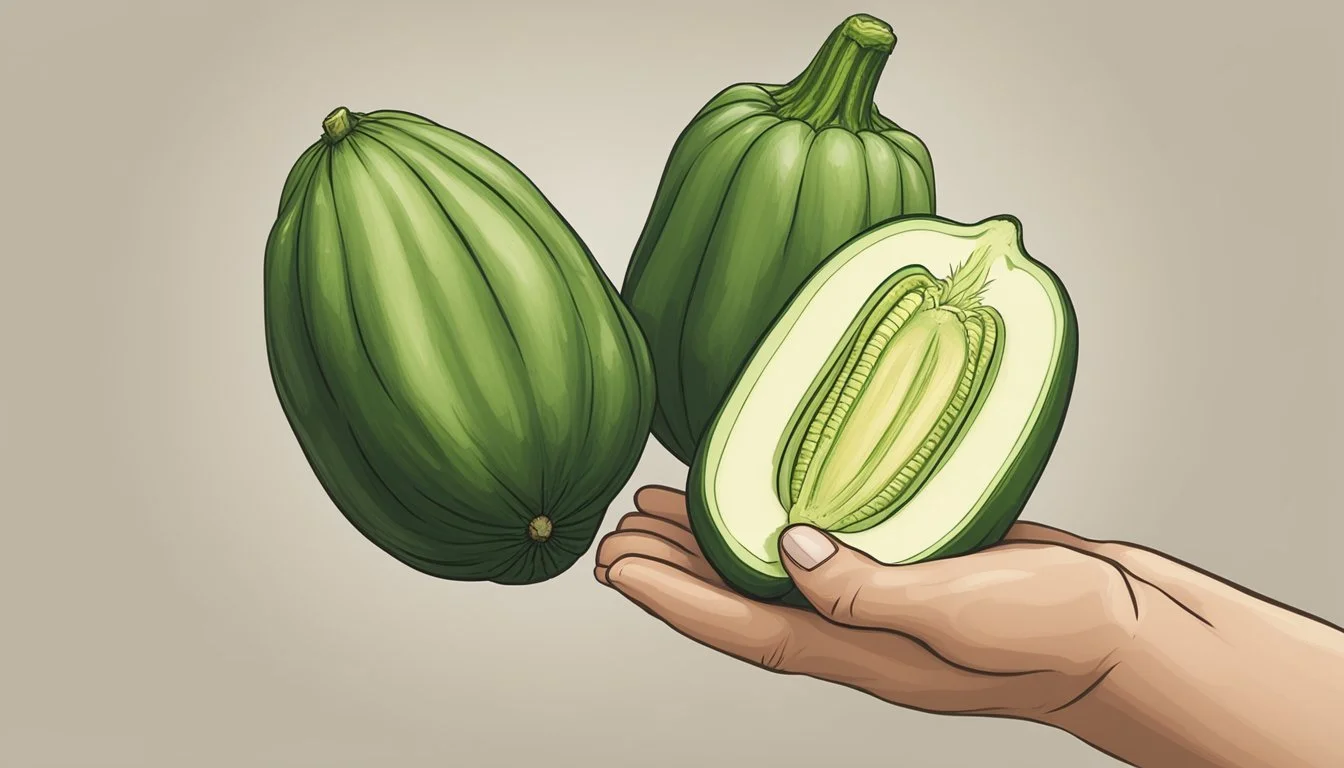How to Substitute Chayote Squash for Zucchini
A Simple Guide
Chayote squash, with its crisp texture and mild flavor, is often used in a variety of culinary applications, from sautés to salads. As a versatile ingredient, it can be subject to the common dilemma of unavailability, prompting the need for suitable substitutes. Zucchini stands out as an excellent alternative due to its similar texture and flavor profile, making it an ideal candidate for replacement in recipes that originally call for chayote.
Understanding how to substitute chayote with zucchini involves considering the context of the dish. While both vegetables can be eaten raw, they are most interchangeable when cooked. Zucchini can mimic chayote's behavior in dishes involving baking, frying, or stewing, offering a comparable consistency and absorbing surrounding flavors well.
When making the switch from chayote to zucchini, it's important to account for the slight differences in cooking times and water content. Zucchini tends to cook more quickly and release a greater amount of moisture. As such, it may be necessary to adjust cooking times and quantities to maintain the desired texture and concentration of flavors in the dish.
Understanding Chayote Squash
Chayote, a member of the gourd family, is a green, squash-like vegetable known for its versatility in cooking. The skin is typically wrinkled and rough, housing a mildly sweet to bland flavor profile. Chayote brings numerous nutritional benefits to the table, including a rich supply of vitamins, minerals, fiber, and antioxidants.
Nutritional Value:
Vitamins: It is notably high in vitamin C.
Minerals: Chayote provides essential minerals such as potassium and magnesium.
Fiber: A substantial fiber content contributes to digestive health.
Antioxidants: The squash contains antioxidants that are crucial for combating free radicals within the body.
The texture of chayote changes depending on its preparation. When raw, it boasts a crisp and slightly sweet taste. It can easily be incorporated into salads or used as a crunchy addition to salsas. However, when it is cooked, the flesh of chayote becomes tender, taking on a zucchini-like texture, making it an excellent vehicle for other flavors in a dish.
The mild flavor and nutritional profile of chayote make it an excellent ingredient for those looking for a healthy, adaptable vegetable. Its cooking applications are broad, from being stir-fried, boiled, to stuffed, allowing it to seamlessly integrate into a variety of cuisines. Whether one is using it in place of zucchini or simply exploring its uses in new recipes, chayote is a nutritious and flavorful choice.
Comparing Chayote and Zucchini
When substituting chayote for zucchini in recipes, one must consider their visual and textural differences, flavor profiles, and nutritional content to ensure the dish's integrity.
Visual and Textural Differences
Chayote, a gourd that resembles a wrinkled pale green pear, is firmer to the touch than zucchini, which is a type of smooth-skinned summer squash. Chayote's skin is typically bumpy and tough, often requiring peeling, whereas zucchini's skin is tender and edible, often maintaining its integrity with cooking. Zucchini is also softer internally when raw, creating a more tender bite compared to the crispness of raw chayote.
Texture:
Chayote: Firm, crisp
Zucchini: Soft, spongy
Flavor Profiles
Chayote squash has a very mild flavor, sometimes described as a blend between a cucumber and an apple, with a slight sweetness that complements many dishes. On the other hand, zucchini bears a more pronounced earthy and sweet taste, which can be intensified when cooked. Both vegetables are versatile, but the chayote's subtle taste may be overpowered by stronger flavors, while zucchini's flavor can stand up to robust ingredients.
Flavor:
Chayote: Mild, subtly sweet, akin to cucumber
Zucchini: Earthy, sweeter, more distinctive
Nutritional Content Comparison
Both chayote and zucchini contribute valuable vitamins and minerals to a diet, but their nutritional profiles are distinct. Chayote provides higher levels of folate and copper compared with zucchini. In contrast, zucchini offers more Vitamin C and Vitamin B6. Both are low in calories and contribute a modest amount of fiber and antioxidants, with zucchini having a slight edge in these categories.
Nutritional Content:
Fiber: Zucchini generally offers more fiber per serving, beneficial for digestive health.
Vitamins & Minerals: Zucchini is high in Vitamin C and B6; chayote is richer in folate and copper.
Caloric Content: Both vegetables are low in calories, making them excellent choices for a weight-conscious diet.
By keeping these points in mind, cooks can successfully incorporate chayote as a substitute for zucchini, taking caution to balance flavor and texture to achieve the desired outcome in their recipes.
Culinary Uses and Preparation
When substituting chayote for zucchini, it's important to consider the textural and flavor differences between these two vegetables. Chayote is crisp and mild, while zucchini is tender with a slightly sweet profile. Both can be used interchangeably in many dishes, but the preparation may vary depending on whether the dish is cooked or raw.
Chayote in Raw Dishes
Chayote lends a crisp texture to raw preparations such as salads. Its firmness makes it an excellent addition, providing a crunch similar to cucumber. To substitute chayote for zucchini in raw dishes:
Peel and slice chayote thinly.
Substitute at a 1:1 ratio for raw zucchini in recipes.
Cooking with Chayote
Chayote is versatile when cooked – it can be steamed, grilled, sautéed, and more. As a substitute for zucchini:
Cook chayote just until it becomes fork-tender to mimic zucchini's texture.
In stir-fries, soups, and stews, cut chayote into pieces similar in size to diced zucchini.
Recipe Adaptations
When adapting recipes to replace zucchini with chayote, consider the final texture and flavor of the dish:
For baked dishes, chayote may require a longer cooking time to achieve a comparable tenderness to zucchini.
As a side dish, both chayote and zucchini can be seasoned similarly and prepared in a variety of styles, from baked to grilled.
Substituting Chayote for Zucchini
When seeking a zucchini substitute, chayote squash is a commendable option due to its comparable texture and mild flavor, making it versatile for both raw and cooked dishes.
In Salads and Raw Preparations
Chayote can seamlessly replace zucchini in salads and raw preparations where its crisp texture is most esteemed. Despite being slightly sweeter, it retains a similar freshness, often compared to a cross between zucchini and cucumber. The key is to:
Slice the chayote thinly, as one would with zucchini, to integrate readily into salads.
Maintain the raw texture of chayote, which supports a variety of dressings and compliments other salad ingredients due to its subtle sweet note.
During Cooking and Baking
In cooked dishes, chayote's flesh remains firm and doesn't become mushy, making it an excellent zucchini substitute. Its ability to absorb flavors mirrors that of zucchini, which is often desired in various squashes. When substituting, one should:
Match the quantities of chayote to zucchini on a one-to-one basis for consistency in recipes.
Monitor cooking times; although similar, chayote may require slightly longer to tenderize due to its denser texture.
Adjusting for Flavor and Texture Differences
When substituting chayote squash for zucchini, it's important to understand the nuances in flavor and texture. Both vegetables can be used interchangeably in various recipes, yet they offer unique characteristics that need consideration to achieve the desired result.
Flavor Profile:
Chayote: Chayote offers a very mild flavor, with a slightly sweet and somewhat apple-like taste. It doesn't overpower other ingredients in a dish and is excellent in both sweet and savory recipes.
Zucchini: Zucchini also has a mild flavor, but it's more on the earthy side with a subtly sweet and slightly bitter taste. It can sometimes contain a buttery flavor when cooked.
Texture:
Raw: If used raw in salads, the texture of chayote is crisp and slightly juicy, similar to a cucumber, while raw zucchini is slightly softer but still has a good crunch.
Cooked: When cooked, zucchini becomes tender and can blend well with a variety of textures in dishes like soups. Chayote maintains a firmer texture when cooked, which can be particularly desirable in stir-fries and other dishes where a crunchier texture is preferred.
To best match the characteristics of chayote when using zucchini as a substitute, consider the following:
Sweetness: If the dish requires the chayote to be a sweet element, you may need to slightly increase the sugar content in the recipe to compensate for the zucchini's lesser sweetness.
Consistency in Soup: For soups, ensure that zucchini is added later in the cooking process to prevent it from becoming too mushy, as it cooks faster than chayote.
Versatility as an Ingredient: Zucchini's versatility as an ingredient allows it to take on the role of chayote in most recipes without much adjustment. It's an accommodating vegetable that pairs well with a wide range of flavors.
By being mindful of these differences and making small adjustments, the transition between chayote and zucchini can be seamless, allowing each to serve as a versatile ingredient in a myriad of dishes.
Selection and Storage Tips
When substituting chayote squash for zucchini, shoppers should look for chayote that have a firm texture and a bright green hue. The skin should be free of blemishes and wrinkles, indicating that the vegetable is fresh. Similarly, when choosing zucchini, one should opt for those with a vibrant green color and a similarly firm texture.
Selecting Chayote:
Look for a bright green color.
Ensure it is firm to the touch.
The skin should be smooth, without blemishes.
Selecting Zucchini:
Choose zucchini with dark green skin.
It should feel heavy for its size.
The surface should be free of cuts and bruises.
Storing these vegetables correctly is crucial to maintain their freshness and water content. Chayote squash and zucchini have a high water content, so they should be stored in the refrigerator's crisper drawer to prevent them from becoming dehydrated and to keep them fresh.
Storing Chayote and Zucchini:
Vegetable Storage method Expected shelf life Chayote Refrigerate in crisper drawer 1–2 weeks Zucchini Refrigerate in plastic bag in crisper 4–5 days
It's essential to keep them in a plastic bag with holes to allow for air circulation or wrapped in a paper towel to absorb any excess moisture. This helps to prevent spoilage and extend the longevity of the vegetables. Avoid washing them until just before use, as excess moisture can accelerate decay. If either vegetable starts to get soft or show signs of wrinkling, it’s best to use them immediately to avoid waste.
Health Benefits of Chayote Squash
Chayote squash, a member of the gourd family, is prized for its nutritional offerings and health benefits. It is a low-calorie vegetable that is high in fiber, promoting good digestion and aiding those on weight management journeys.
The squash is hydrating, consisting largely of water, which further supports digestive health and maintains hydration levels. Its fiber content not only facilitates healthy digestion but also contributes to a feeling of fullness, potentially reducing overall calorie intake.
In terms of vitamins and minerals, chayote is notably rich in vitamin C, vitamin B9 (folate), magnesium, and potassium. Vitamin C is essential for immune function and skin health, while folate is crucial for DNA synthesis and repair, as well as for fetal development during pregnancy. Magnesium plays a role in mood regulation and muscle function, whereas potassium is vital for heart health and fluid balance.
Key Nutritional Elements of Chayote:
Fiber: Supports digestion and satiety
Vitamin C: Antioxidant that boosts the immune system
Vitamin B9 (Folate): Important for cell growth and metabolism
Magnesium: Involved in mood regulation and muscle function
Potassium: Helps maintain heart health and electrolyte balance
Additionally, chayote contains antioxidants such as polyphenols and amino acids. These compounds help the body combat oxidative stress, which could otherwise contribute to chronic diseases and aging.
Labeled as nutritious for its aforementioned nutrients, chayote squash is an excellent food choice for those looking to enhance their overall health profile. With its broad spectrum of vitamins and minerals, along with fiber and antioxidants, chayote stands out in the vegetable world for its health-boosting potential.
Exploring Alternative Substitutes
When one is looking to substitute zucchini in their dish with chayote squash ("vegetable pear"), there are several other vegetables that can act as good substitutes. It's essential to consider the desired texture and taste to maintain the integrity of the dish.
For cooked applications:
Eggplant: With its meaty texture, eggplant can be sliced and integrated into dishes like lasagna, adding a rich flavor.
Cucuzza: This squash shares a taste profile with a mix of zucchini and cucumber, suitable for recipes calling for cooked chayote.
Patty Pan Squash: Offers a slightly different shape but still provides a soft texture suitable for baking and sautéing.
In the raw form:
Cucumber: Holds a cool, crispy bite, appropriate for fresh salads and uncooked dishes.
Green Papaya: Can contribute a somewhat sweet and somewhat tangy flavor, fitting for raw salads and slaws.
For stews and hearty meals where chayote is often used for its starchy quality, one can consider:
Substitute Comparable Qualities Yellow Squash Mild taste, similar texture Pumpkin Sweeter, yet holds shape when cooked Potatoes Hearty, starchy consistency but a different flavor profile
For crunch and volume:
Celery: Provides a distinct crunch, suitable for a textural component in salads and soups.
Each suggested substitute may alter the original flavor of the dish, but they can emulate the texture of zucchini to a satisfactory degree, and in some cases, might provide additional layers of taste and texture that could enhance the recipe.

